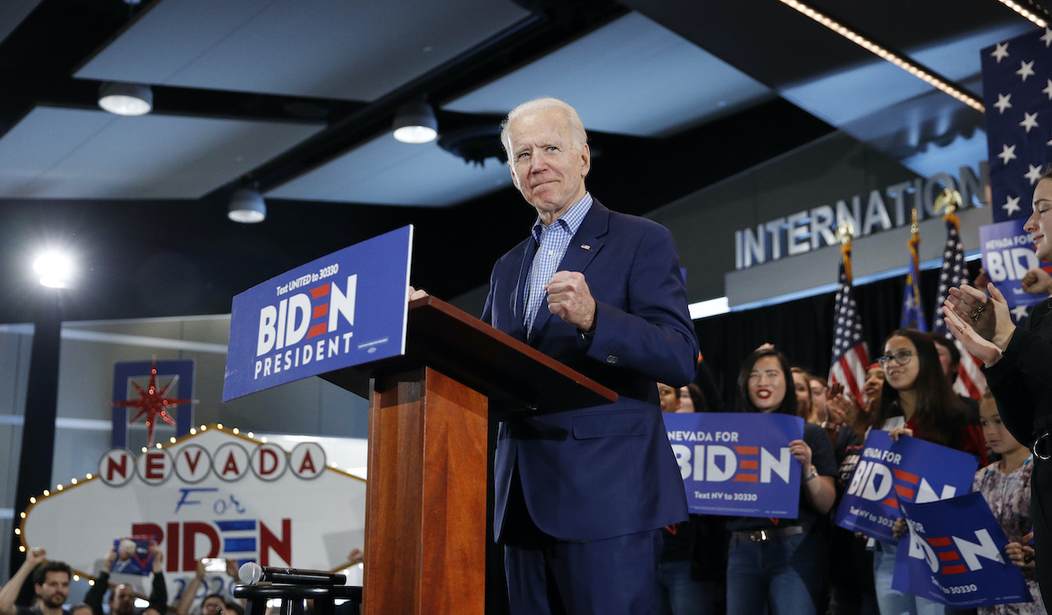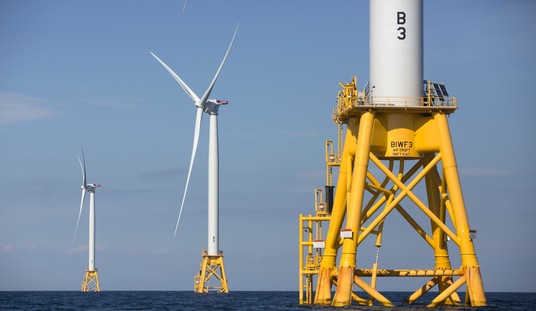Jon Ralston is a long-time political analyst in Nevada who generally calls the races there with some precision. He has a blog that he updates a couple times a day with his view of where the race stands based on ballot information from the Nevada Secretary of State office.
Nevada is really three “states” when it comes to state-wide elections. Clark County/Las Vegas represents slightly less than 70% of the registered electorate in Nevada. Washoe County/Reno is just a little less than 20 percent, and “rural” Nevada — everywhere else — is the balance.
Nevada began both in-person and mail-in voting two weeks prior to election day, and the Secretary of State produces ballot information each day of votes cast by party affiliation of the voters. From those numbers Ralston is able to make comparisons to prior elections, and draw some conclusion based primarily on turnout.
Clark County is heavily Democrat, dominated by labor union employees who work in the gaming and hospitality industries in Las Vegas. Harry Reid built a tremendous turnout machine in Clark County because for a Democrat to win statewide in Nevada he/she needs to strong turnout to build a “firewall” of votes that will withstand overwhelming support for GOP candidates in most of the rest of the state. Washoe County is roughly 50-50 in terms of political registration, so when one side or the other has a stronger than expected turnout in Washoe County that will either add to or take away from the Clark County firewall. In the remainder of the state, GOP candidates are going to roll up a very large advantage in votes cast. But with only about 13% of the registered electorate in the rural counties, the numbers are insufficient if the firewall of votes from Clark County is where it needs to be.
Historically, Ralston sets that number at around 70,000 votes.
Vote totals in Nevada have typically correlated very close to party registration in the state. Nevada Democrats hold about a 4% advantage in statewide registration over the GOP. Turning out their registered voters in even numbers means the GOP loses unless independent voters break heavily in favor of the GOP.
Ralston’s tracking of returned ballots by party registration over the last few days has shown the Democrats lagging slightly behind their 2016 performance. Pres. Trump lost Nevada by 27,000 votes in 2016 — Clinton’s firewall of 70,000 votes in Clark County from early voting and absentee ballots before election day was able to withstand the GOP’s typical election day in-person voting advantage and the final balloting from the rural counties.
This year is different from 2016 primarily due to the fact that so many more voters have cast ballots by mail. More than 1 million votes are already in out of a total electorate of 1.7 million registered voters. By party affiliation, Democrats have a statewide “firewall” of banked votes totaling 80,000. With new registration and higher than normal turnout, Ralston estimates that approximately 200,000 more votes will be cast than in 2016, so the firewall needs to be bigger than 2016 simply because more total votes will come in. So what was seen as a safe number at 70,000 in 2016, probably needs to be 80,000 in 2020 for Democrats to be comfortable with their lead going into Tuesday when the GOP vote totals will be higher. According to Ralston’s numbers, they reached that “safe zone” yesterday.
The complication with trying to overcome the Democrat lead in 2020 is the fact that there will be fewer votes left to be cast by GOP voters on Tuesday. With 1 million votes already cast, and using an 80% turnout model of registered voters (1.7 million), only 350,000 total votes remain to be cast between now and Tuesday. Not enough of those are in rural counties where Trump will win by huge margins to overcome the 80,000 vote deficit that already exists based on the party registration of voters who have cast their ballots early.
One factor Ralston’s analysis cannot account for is voters who do not vote consistent with their party registration. This is important in taking into account polling that shows Trump doing better with Hispanic voters than previous GOP candidates. The Democrat party base in Nevada has a significant Hispanic component — they are a large part of the unionized workforce in Las Vegas. The correlation between votes cast and party affiliation in Nevada is quite high — again attributable to the Harry Reid political machine he built in Nevada over three decades. There are about 325,000 Hispanics eligible to vote in Nevada, which represents 20% of the total electorate.
If 80% turnout to vote, that is 260,000 votes. Clinton won the Hispanic vote 66-28% over Pres. Trump — which would be a margin of 100,000 votes this year. If that changed to 60-40, it would cut the margin in half to 50,000 votes. So winning a higher percentage of Hispanic votes is one way to upset the historical numbers that Ralston’s analysis relies upon.
The analysis also does not give any indication of how independents vote in Nevada. Ralston provides scenarios in his extrapolations for a 50-50 split, and a 55-45 split in both directions — one for Biden and one for Trump — all of which still end up with Biden winning if he has the 80,000 vote firewall prior to election day. Gary Johnson received 37,000 votes as the Libertarian candidate in 2016, and no selection for President was included on another 29,000 ballots. So that is a total of 66,000 potential votes that didn’t go to either Trump or Clinton in 2016 — almost 6% of all ballots cast.
So the race is not over in Nevada, but the Democrats have done what objective analysis says they needed to do in order to feel comfortable heading into in-person voting on Tuesday.














Join the conversation as a VIP Member